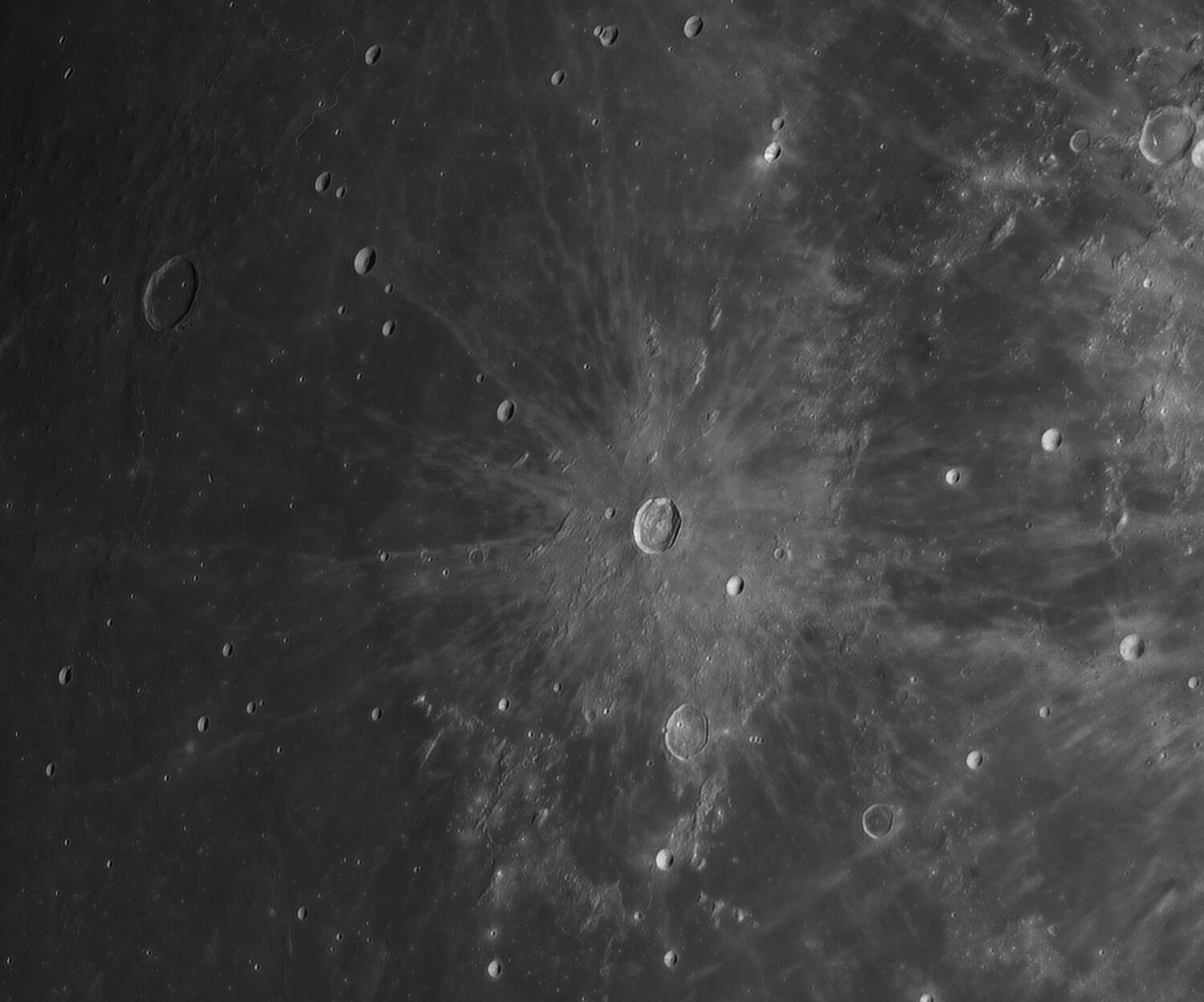Keplero è un brillante cratere da impatto situato non lontano dall’equatore. La sua notevole raggiera è meno estesa, ma più contrastata di quella del suo “vicino” Copernico. Il cratere appartiene al più recente dei periodi geologici lunari, quello Copernicano, riservato alle formazioni con un’età stimata di meno di un miliardo di anni. Secondo un’ipotesi di Whitaker, Riccoli scelse i nomi dei crateri Keplero, Copernico ed Aristarco per un motivo ben preciso, spiegato nella pagina dedicata ad Aristarco.
(ENG) Kepler is a bright impact crater located not far from the equator. Its remarkable rays are less wide, but more contrasted than those of the “neighbor” Copernicus. The crater belongs to the most recent of the lunar geological periods, the Copernican, reserved to formations with an estimated age of less than a billion years. According to an hypothesis by Whitaker, Riccoli choose the names of the craters Kepler, Copernicus and Aristarchus for a very specific reason, explained in the page dedicated to Aristarchus.
Kepler e la sua raggiera
La raggiera che entra da Est, incrociandosi con quella di Kepler è quella di Copernico. Ad ovest, a ridosso del terminatore, è visibile il cratere Marius con i suoi domi.
(ENG) The rays coming from the East, crossing those of Kepler, belong to Copernicus. Close to the terminator, Marius crater with its domes is visible.
